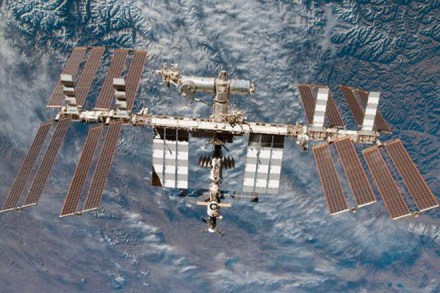The International Space Station (ISS) that has been orbiting the Earth for over two decades now is now on a flight back to Earth. NASA has announced that the spacecraft that had been orbiting the Earth with international crew of cosmonauts and conducting space research will cease operations and plunge into the waters of South Pacific Ocean in nine years from now.
NASA informed that the operations of the ISS will be transitioned to a low-Earth orbit destination. The space station in microgravity is entering its third and most productive decade.
How does ISS work?
A brainchild of former US President Ronald Reagan, the first piece of the International Space Station, a control module, was sent to space on board a Russian rocket. A crew onboard the US Endeavour space shuttle attached the control module with the Unity node.
The space station was built for two years until it was ready to receive a crew onboard. Since November 2000, ISS has had over 200 astronauts from 19 different nations on board, making human presence in space all the time.
The space station can support six people at a time. The station houses laboratory modules from Russia, Europe and Japan as well. The ISS now is roughly the size of an American football field and weighs about 1 million pounds.
The ISS has witnessed several accomplishments in space research. In 2016, a NASA astronaut sequenced DNA in space for the first time. In 2018, NASA’s Cold Atom Lab became the first facility to produce a fifth state of matter referred to as Bose-Einstein condenstate. The world came to know how to increase crop production without access to crucial resources and ISS used advanced water filtration and purification systems there.
How is NASA planning to bring down ISS
ISS re-entry to Earth’s atmosphere will happen in January 2, 31. The altitude of the spacecraft will be lowered before it begins its descent into “South Pacific Oceanic Uninhibited Area” at a place called Point Nemo.
Point Nemo, located 2,700 km away from any land, is a space cemetery where space debris is brought to rest. The point is named after a character in Jule Verne’s novel “Twenty Thousand Leagues Under the Sea.”
The final push to lower ISS to the earth’s atmosphere and its safe entry will be ensured by ISS operators.
Initially ISS was meant to be operative for 15 years but in 2014 its span was extended in space to another 10 years.
What happens after ISS returns to Earth
ISS will be replaced by “one or more commercially-owned and -operated” space platforms, Phil McAlister, director of commercial space at NASA Headquarters, said in a statement. He further suggested the next space platform will be from private sectors that are now “technically and financially capable” of building and operating a low Earth orbit destination with NASA’s assistance.
By renting space to commercial platforms, NASA will save up to $1.3 billion in 2031 alone. The money saved can be utilised in the space agency’s deep space exploration projects, NASA director informed. But before the retirement, ISS has ambitious goals in the upcoming decade including using it as an analog for NASA’s upcoming Mars transmit mission
